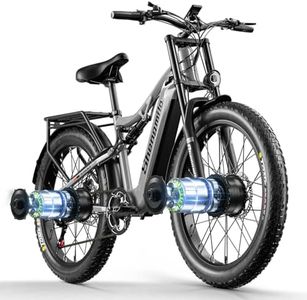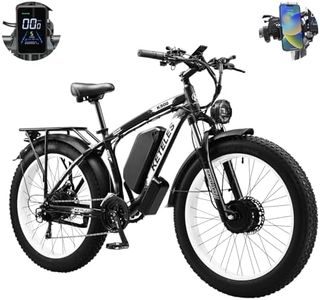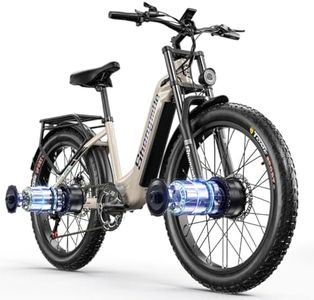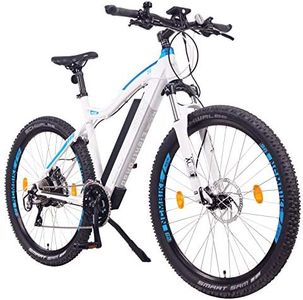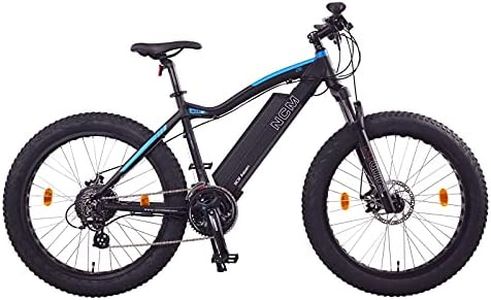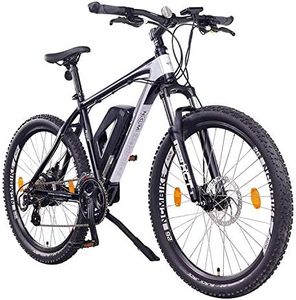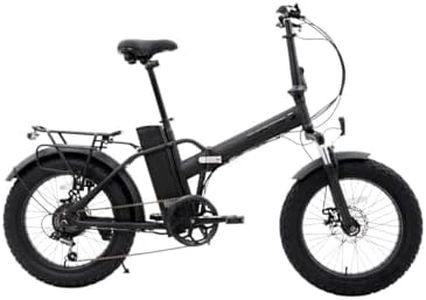We Use CookiesWe use cookies to enhance the security, performance,
functionality and for analytical and promotional activities. By continuing to browse this site you
are agreeing to our privacy policy
8 Best Budget Electric Bikes
From leading brands and best sellers available on the web.By clicking on a link to a third party's website, log data is shared with that third party.
Buying Guide for the Best Budget Electric Bikes
When choosing a budget electric bike, it’s important to focus on what will match your riding style, distance, and local terrain. Budget electric bikes can offer great value if you prioritize the features that matter most for your daily needs. Start by thinking about where and how often you’ll use your bike: Are you commuting, exercising, or just riding casually? By building a list of non-negotiables, you’ll be able to sort through the specs more easily and avoid paying for extras you don’t need.Battery Capacity (Wh or Ah)The battery capacity tells you how much energy the bike can store, which impacts how far you can travel before needing a recharge. Higher capacity (measured in Watt-hours or Amp-hours) means more range, but also usually adds weight. Short urban rides can easily make do with a lower capacity, while longer commutes or hilly areas benefit from a bigger battery. Factor in how far you typically ride to decide how much capacity is enough—if most of your trips are under 15km, a smaller battery can suffice, but for longer or unpredictable rides, opt for a higher capacity.
Motor Power (Watts)Motor power, measured in Watts, determines how much assistance the bike gives you, especially when climbing hills or accelerating. Lower wattage motors (around 250W) are generally enough for flat city riding, lightweight users, or where laws limit power. For steeper terrains or heavier riders, look for higher power (350W–500W), though this may add weight and reduce range slightly. Match the motor to your terrain and physical needs for the best experience.
RangeRange indicates how far the bike can travel on a single charge. This is influenced by battery size, motor power, rider weight, terrain, and assistance level. Some bikes might go as little as 20km on a charge, while others can reach 60km or more. Consider your typical journey distances and add a buffer—it's better to have more range than you need than to run out mid-trip.
WeightThe overall weight of the bike affects handling, portability, and ease of pedaling without power. Lighter bikes (under 20kg) are easier to carry up stairs or into public transport, ideal for city dwellers. Heavier models may feel more stable but can be cumbersome if you need to lift or push the bike unpowered. Think about whether you’ll need to carry or store your bike and choose accordingly.
Assist Levels and ControlsElectric bikes usually offer several pedal assist levels, which control how much help the motor provides. More levels allow finer control over speed and battery usage. Simple bikes may have just a couple of settings, while others offer five or more. If you like adjusting your ride to conditions or want to manage battery life closely, look for more assist options and easy-to-use controls.
Frame StyleFrame design affects comfort, step-in height, and suitability for different body types or uses. Step-through frames are easier to mount, especially with restrictive clothing or for those with mobility limitations, while classic frames provide a sportier feel. Evaluate what feels comfortable and practical for you before choosing a style.
BrakesElectric bikes commonly feature either rim brakes or disc brakes. Disc brakes offer stronger, more reliable stopping power, especially in wet weather, while rim brakes are simpler and easier to maintain. If you plan to ride in hilly or rainy areas, consider prioritizing disc brakes for added safety.
Tire Size and TypeTire size and tread type affect ride comfort, stability, and suitability for different surfaces. Wider tires provide more cushioning and grip, making them better for rough or mixed terrain, while slimmer tires are smoother and faster on pavement. Choose tire styles based on the surfaces you expect to ride most often.

